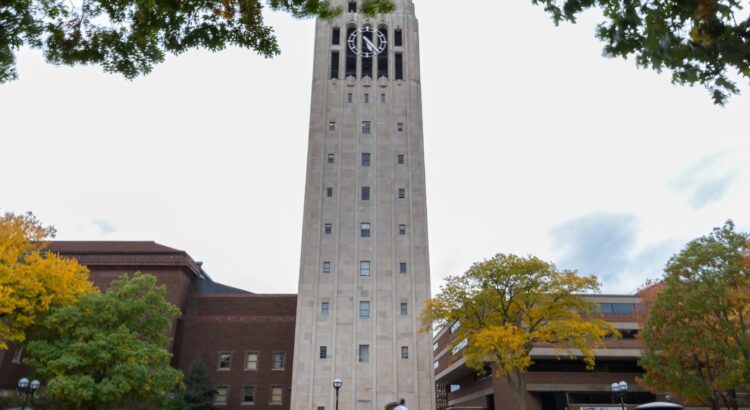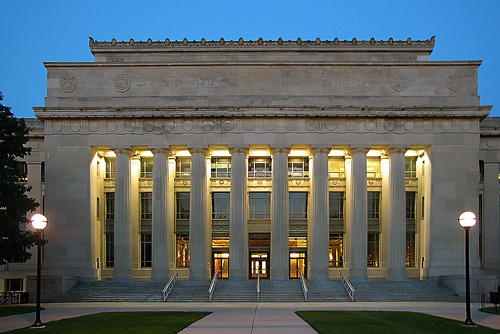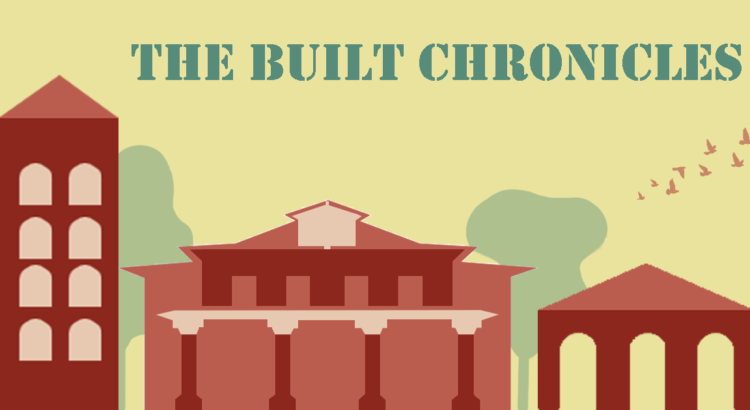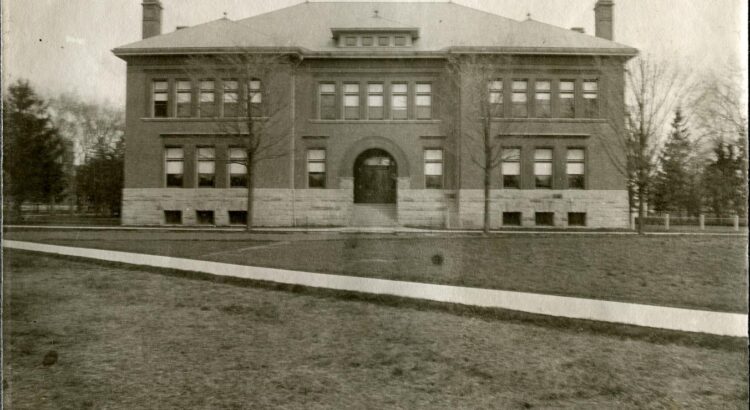The Architecture and Design Building at the University of Michigan in Ann Arbor is a stunning example of modernist architecture. The building was completed in 2002 and is located on the North campus.
The building is designed in the International Style, with a sleek and minimalist aesthetic. It is constructed of glass, steel, and concrete, and features clean lines and a monochromatic color palette. The exterior is characterized by large windows, which allow natural light to flood the interior spaces.


One of the most striking features of the Architecture and Design Building is its use of materials. The building’s exterior is clad in a combination of glass and metal panels, which give it a sleek and modern appearance. The metal panels are arranged in a series of horizontal bands, which are punctuated by vertical glass fins. This design element creates a sense of movement and dynamism, and it helps to break up the building’s mass.
Inside, the Architecture and Design Building is arranged around a central atrium, which serves as the building’s main circulation space. The atrium is flooded with natural light, thanks to a large skylight above. The atrium also serves as a gathering place for students and faculty, and it is often used for exhibitions and other events.


Overall, the Architecture and Design Building is a beautiful example of modernist architecture and is a vital part of the university’s academic landscape. Its use of materials, light, and form creates a sense of elegance and refinement, and it serves as a beacon of creativity and innovation on the University of Michigan campus.





 The Burton Memorial Tower is a well-known landmark
The Burton Memorial Tower is a well-known landmark  The tower is built in the Collegiate Gothic style, with a blend of medieval and modern elements. It is constructed of Indiana limestone, with decorative carvings and intricate details. The clock on the tower, visible from many parts of campus, has four faces with a diameter of 11 feet and is powered by a weight and pulley system, which must be wound manually every week.
The tower is built in the Collegiate Gothic style, with a blend of medieval and modern elements. It is constructed of Indiana limestone, with decorative carvings and intricate details. The clock on the tower, visible from many parts of campus, has four faces with a diameter of 11 feet and is powered by a weight and pulley system, which must be wound manually every week.



 In addition to its impressive architecture, the Law Library is known for its extensive collection of legal materials. The library houses over 700,000 volumes, including books, journals, treatises, and primary legal materials such as court cases and statutes along with a large collection of digital resources, including databases, e-books, and online legal research tools.
In addition to its impressive architecture, the Law Library is known for its extensive collection of legal materials. The library houses over 700,000 volumes, including books, journals, treatises, and primary legal materials such as court cases and statutes along with a large collection of digital resources, including databases, e-books, and online legal research tools.
 President’s house, serves as one of the few reminders of a red-brick campus that was the Ann Arbor campus of the University of Michigan in 1990, and is one of the oldest extant classroom buildings on campus.
President’s house, serves as one of the few reminders of a red-brick campus that was the Ann Arbor campus of the University of Michigan in 1990, and is one of the oldest extant classroom buildings on campus.